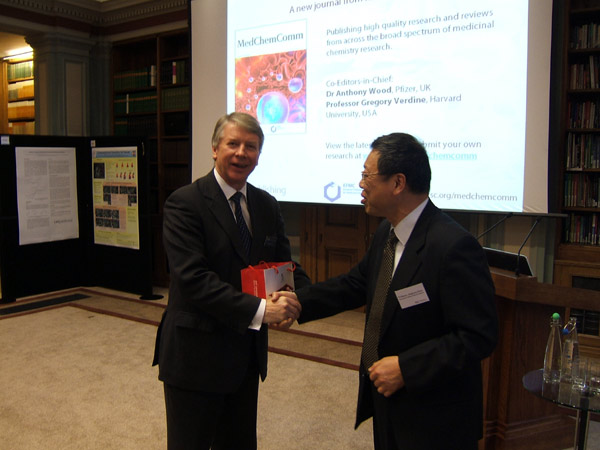We are really pleased to say that MedChemComm is now being indexed in ISI Web of Science.
Issue 1 is already there and some of the articles have already been cited. Congratulations to Jean-Louis Reymond, Julia M. Adam, Franco Chimenti and Zhisong Lu and their research teams for being the first cited authors of MedChemComm in ISI.
Remember that you can now read all these articles for free!
Happy Holidays and best wishes for 2011!
Chemical space as a source for new drugs
Jean-Louis Reymond, Ruud van Deursen, Lorenz C. Blum and Lars Ruddigkeit
Med. Chem. Commun., 2010, 1, 30-38
DOI: 10.1039/C0MD00020E
Design, synthesis, and structure–activity relationships of indole-3-carboxamides as novel water soluble cannabinoid CB1 receptor agonists
Julia M. Adam, Jim Cairns, Wilson Caulfield, Phillip Cowley, Iain Cumming, Morag Easson, Darren Edwards, Morag Ferguson, Richard Goodwin, Fiona Jeremiah, Takao Kiyoi, Ashvin Mistry, Elizabeth Moir, Richard Morphy, Jason Tierney, Mark York, James Baker, Jean E. Cottney, Andrea K. Houghton, Paul J. Westwood and Glenn Walker
Med. Chem. Commun., 2010, 1, 54-60
DOI: 10.1039/C0MD00022A
Synthesis and selective inhibition of human monoamine oxidasesof a large scaffold of (4,5-substituted-thiazol-2-yl)hydrazones
Franco Chimenti, Daniela Secci, Adriana Bolasco, Paola Chimenti, Arianna Granese, Simone Carradori, Melissa D’Ascenzio, Matilde Yáñez and Francisco Orallo
Med. Chem. Commun., 2010, 1, 61-72
DOI: 10.1039/C0MD00014K
Effect of particle shape on phagocytosisof CdTe quantum dot–cystinecomposites
Zhisong Lu, Yan Qiao, Xin Ting Zheng, Mary B. Chan-Park and Chang Ming Li
Med. Chem. Commun., 2010, 1, 84-86
DOI: 10.1039/C0MD00008F












